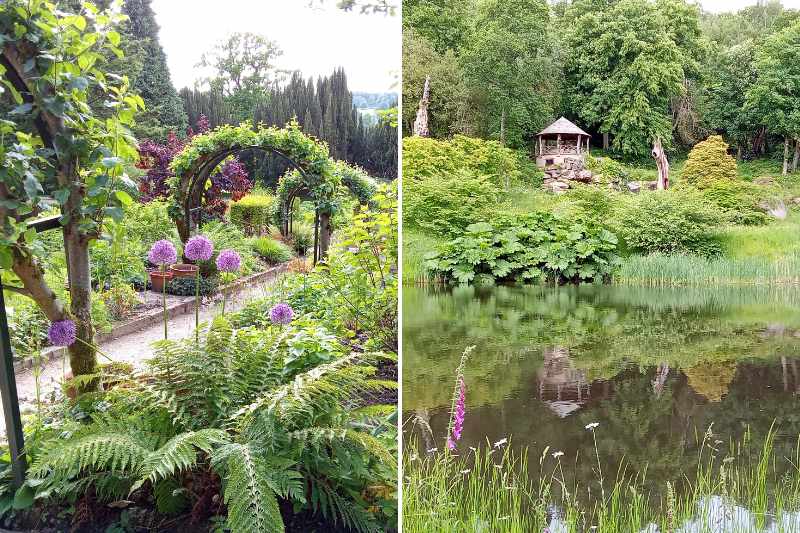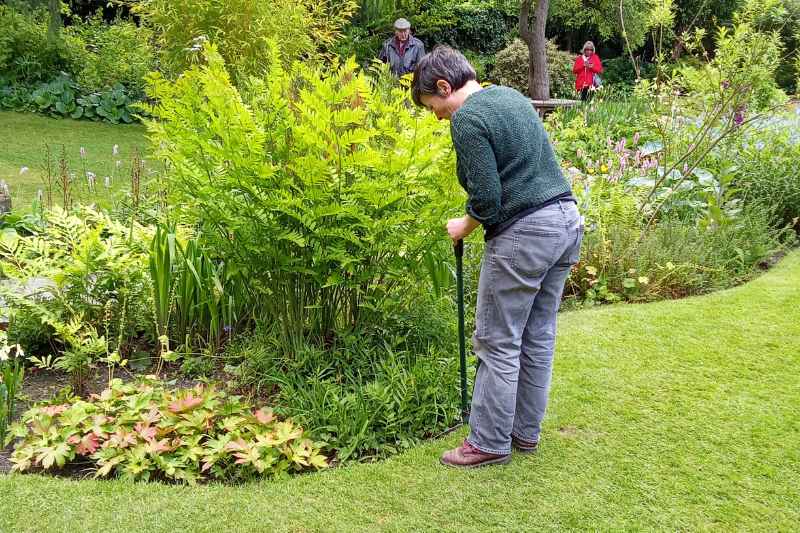I set off in early June for a trip to the north of England, where I hadn't returned for (too) many years. It was in this region bordering Scotland that, as a teenager, I met my English pen pal and her family, who instilled in me a love for the English language and guided my choice of studies towards fascinating linguistic studies. I wanted to combine this pilgrimage with visits to gardens, a passion now deeply rooted in my life.
Amidst the lakes and typical heaths of the north, hiking and garden visits filled the days. In early June, the gardens were abundant, much more than I had imagined, and several things caught my attention. If, like me, you have eyes only for the English garden, follow me to this country where the garden reigns supreme.

Yorkshire and its gardens: an absolute dream
In preparing for this trip, I had to make decisions about certain visits and forgo others. North England is indeed teeming with gardens, just like the rest of the country. Travelling from the west coast (the Lake District, a region of lakes in Cumbria) to the east coast (the York North Moors National Park) and down to Derbyshire, I had identified a few gardens with the help of beautiful books on the subject (The Gardens of England and Gardens of England) and by consulting various English websites listing all the beautiful places not to be missed, notably that of the RHS.
With a garden a day, the enchantment worked every time, as the gardens shared the English spirit but each had a different personality.
Notably, the Hall, this small castle or large manor typical of England, gives a unique spirit to each garden. Its architecture leaves its mark on the place, just like the Walled gardens (brick-walled gardens), where the most beautiful mixed-borders are gathered.
I preferred modest-sized gardens, as I have a taste for this type of garden. To name just a few, the gardens of Holker Hall, Burton Agnes Hall, and Newby Hall were true favourites, but the large estate of Chatsworth, a bit further down in Derbyshire, much appreciated by the English and tourists, also deserves a little detour, just like the famous Levens Hall and its topiaries in Cumbria.
The colour palette
At this end of spring, the English gardens display absolutely charming shades, all the nuances of white, blue, pink, mauve, and purple. It is this palette that acts everywhere, subtly enchanting us. The tonal variations are very well crafted, and the harmony that emerges is the result of a precise work of chromatic nuances of a distinctly British elegance.

Many gardens also feature monochromatic subspaces, a great specialty across the Channel, as seen here at Burton Agnes Hall, which includes a very successful yellow garden, blending blooms in a range of soft to vibrant yellows, with golden foliage, and offering views of the stunning Elizabethan manor.

Finally, in the Lake District, we see many ericaceous plants, as the soil here is conducive to their establishment. They are still in full bloom, like rhododendrons and azaleas. This gives, for example, in the garden of Holehird gardens, a more pronounced range of colours, equally attractive.

Mixed borders and key plants of the English garden
Throughout the gardens visited, certain perennial plants invariably reappear in the mixed borders and the walled gardens, absolutely stunning in their mastery and precision. The crambe, columbine, and astrantia, sanguisorba, cardoon, Oriental poppy, as well as Alliums, peonies still in bloom, roses, giant Thalictrums, and extravagant lupins!
The hostas that I see in most gardens are simply breathtaking here, enormous and in all colours, teasing you...

The ornaments of English gardens
Strolling through English gardens also means discovering a thousand details to inspire beautiful arrangements back home. If the English are great lovers of benches and seats, they multiply them at will in their gardens, providing the perfect resting spot with views not to be missed. I love them all: wooden, wrought iron, painted, with a vintage look, often Victorian style or in the Arts & Crafts movement.

I also love the supports placed everywhere to help sweet peas and other wonders climb, as well as the obelisks that add incredible charm to all these gardens. The largest gardens willingly use structures, like in our country, these constructions designed to enhance the garden, such as kiosks. Below, at the estate of Chatsworth, you can find these follies in the wild garden, as well as divine arches leading up the hill to the vast vegetable garden.

Mulching, no mulching
Surprisingly, English flowerbeds are little or not mulched at all. Well… not like we do in France. The horde of gardeners in each garden partly explains this, as they do considerable work all year round, continuously weeding and tracking down every adventive. The black soil, rich in humus, results from a thick layer of decomposed mulch, which the plants love.
Close mowing… or differentiated mowing!
One of my biggest surprises was the treatment of the grassy areas. England has long been known for its passion for the famous English lawn, a true pride of gardeners in large estates or private gardens. The lawn holds great aesthetic value here, symbolising the opulence of the owners for centuries. It is one of the essential elements of the English garden, beautifully highlighting the planted scenes. During my visit to a first garden on the heights of Lake Windermere, I was astonished to hear a lawnmower buzzing while I was admiring the lush, perfectly manicured carpet of the walled garden. The gardener had just started mowing, even though the green and soft carpet looked like a billiard table!
Conversely, English gardens have evolved with the times and are also adopting more ecological methods applied to large spaces. In the vast gardens or parks, often found in all the beautiful estates visited, there are now large areas treated with differentiated management: tall grasses coexist with more manicured areas, and this no longer shocks anyone... and that's a good thing!
The garden of Haddon Hall surprised me the most, with, in an area I would call prestigious, just in front of the manor, two wide strips of unmown grass in the main driveway. Surprising, isn't it?

Borders with precision
Where does this feeling of elegance, harmony, and order come from when visiting an English garden? Beyond the lawns, fine and regular carpets, maintained both by human hands and the frequent, beneficial rains, it must be said that the precise borders are a common denominator in all the gardens visited. They add this admirable precision, counterbalanced by the opulence of the plants. The edges of the flowerbeds are so neat that not a blade of grass protrudes onto the soil.
While discussing with a team of gardeners at the York Gate gardens, one of them confessed to me that the borders are redone every week! In such spaces where the flowerbeds abound, I thought they must do nothing else, since on 4000 m², they barely finish this laborious and meticulous task before having to start again! But this does not diminish the British calm, present here even in the gardens.
The rigor of these neat borders is sometimes balanced by the exuberance of a sprawling perennial, like a geranium that escapes, thereby softening an aspect that can sometimes seem almost unreal...

My advice: The Halls and castles are worth a visit in their own right, which does add a bit to the price of the garden, of course... If you have the time, don't hesitate to visit some private gardens as well. You can visit many during the summer period in England! And treat yourself to a lunch or an afternoon tea in all the tea rooms that are an integral part of the gardens in this country: the food is excellent, local, in a very British atmosphere, with superb decor...
































Comments